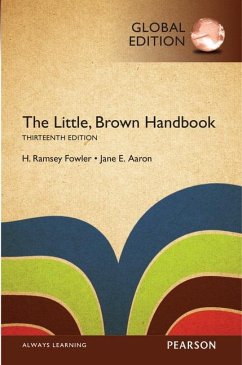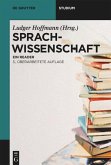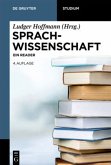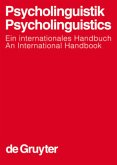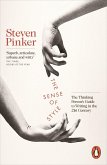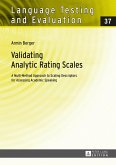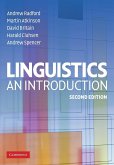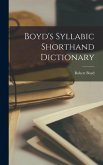For courses in English Composition.
The gold standard of handbooks – unmatched in accuracy, currency, and reliability
The Little, Brown Handbook is an essential reference tool and classroom resource designed to help students find the answers they need quickly and easily. While keeping pace with rapid changes in writing and its teaching, it offers the most comprehensive research and documentation available–with grammar coverage that is second to none.
With detailed discussions of critical reading, media literacy, academic writing, and argument, as well as writing as a process, writing in the disciplines, and writing beyond the classroom, this handbook addresses writers of varying experience and in varying fields.
MyWritingLab™ not included. Students, if MyWritingLab is a recommended/mandatory component of the course, please ask your instructor for the correct ISBN and course ID. MyWritingLab should only be purchased when required by an instructor. Instructors, contact your Pearson representative for more information.
MyWritingLab is an online homework, tutorial, and assessment product designed to personalize learning and improve results. With a wide range of interactive, engaging, and assignable activities, students are encouraged to actively learn and retain tough course concepts.
Features + Benefits
This title is a Pearson Global Edition. The Editorial team at Pearson has worked closely with educators around the world to include content which is especially relevant to students outside the United States.
Accessibility and Ease of Use
Authoritative and accessible coverage of the writing process, grammar, research, and documentation have made The Little, Brown Handbook one of the bestselling handbooks of all time.
A clean, uncluttered page design uses color and type clearly to distinguish parts of the book and elements of the pages.
Annotations on both visual and verbal examples connect principles and illustrations.
Dictionary-style headers in the index make it easy to find entries, and helpful endpapers offer several paths to the book’s content.
NEW! Streamlined explanations and new explanatory headings throughout make key information easier to find.
Academic Writing
NEW! A greatly expanded overview of common academic genres in the chapter on academic writing (now at the start of Part 2), such as responses, critical analyses, arguments, informative and personal writing, and research papers and reports, highlights key features of each genre and points students to examples in the handbook.
NEW! A summary box titled “The writing situation” with each of the sample papers gives an overview of the situation to which the student responded–subject, purpose, audience, genre, and use of sources–thus connecting concepts with actual writing.
NEW! Eighteen examples of academic writing in varied genres appear throughout the handbook, among them a new critical analysis of an advertisement and a new social-science research report documented in APA style.
Synthesis receives special emphasis wherever students might need help balancing their own and others’ views, such as in responding to texts and visuals.
NEW! The expanded chapter on critical reading and writing includes two full-length opinion pieces as exercises in critical reading, a new advertisement with a student’s analysis, a revised discussion of writing critically about texts and visuals, and a new critical analysis paper.
Parts 9 and 10 give students a solid foundation in research writing and writing in the disciplines (literature, other humanities, social sciences, natural and applied sciences), along with extensive coverage of documentation in MLA, Chicago, APA, and CSE styles.
NEW! Key material on academic integrity in Chapter 6 on academic writing and Chapter 44 on plagiarism discusses developing one’s own perspective on a topic, using and managing sources, and avoiding plagiarism. Other chapters throughout the handbook reinforce these important topics.
Research Writing and Documentation
To help students develop their own perspectives on their research subjects, the text advises asking questions, entering into dialog with sources, and presenting multiple views fairly and responsibly.
Extensive attention to research methods supports students in the early stages of research.
The discussion of searching for and evaluating sources–library, Web, and social media–helps students to refine search terms and to distinguish between reliable and unreliable sources. Case studies show the application of critical criteria to sample articles, Web documents, and a blog.
NEW! A streamlined discussion of gathering information from sources stresses keeping accurate records of source material and marking borrowed words.
Meticulous attention to research writing across the disciplines emphasizes managing information, using the library as a research gateway, evaluating and synthesizing sources, avoiding plagiarism, and documenting sources accurately.
Students learn how to document and cite sources ethically in MLA, Chicago, APA, and CSE styles.
NEW! A chapter on documenting sources explains key features of source documentation, defines the relationship between in-text citations and a bibliography, and presents pros and cons of bibliography software.
NEW! Updated, annotated samples of key source types illustrate MLA and APA documentation, showing students how to find the bibliographical information needed to cite each type and highlighting the similarities and differences between print and database sources.
NEW! Reorganized chapters for all four styles group sources by type, thus simplifying the process of finding appropriate models and clarifying differences among print, database, Web, and other sources.
NEW! A succinct guide accompanies the index to the models in each style to help students match their sources with appropriate citation formats.
NEW! The chapter on CSE documentation reflects the new eighth edition of Scientific Style and Format: The CSE Manual for Authors, Editors, and Publishers.
NEW! A complete social-science research report shows APA style in the context of student writing.
Two research papers illustrate MLA style and include a paper-in-progress, following a student through the research process and culminating in an annotated essay on green consumerism.
The extensive chapter on avoiding plagiarism discusses deliberate and careless plagiarism, shows examples of plagiarized and revised sentences, and gives updated advice about avoiding plagiarism with online sources.
Writing As a Process
NEW! A reorganized presentation of drafting, revising, and editing distinguishes revising more clearly as a step separate from editing.
NEW! An expanded discussion of thesis covers using the thesis statement to preview organization.
NEW! New, relevant examples in Chapter 4 on paragraphs illustrate important concepts of coherence, organization, and development.
NEW! A revised and streamlined chapter on presenting writing focuses on essential information related to document design, visuals and other media, writing for online environments, and oral presentations.
NEW! A revised discussion of preparing a writing portfolio gives an overview of common formats and requirements.
Usage, Grammar, and Punctuation
NEW! Revised explanations of grammar concepts and rules throughout simplify the presentation and emphasize key material.
NEW! Two common trouble spots—sentence fragments and passive voice—are discussed in greater detail and illustrated with new and more examples.
NEW! Dozens of new and revised examples and exercises clarify and test important concepts.
NEW! Added examples in Part 8 on effective words show common shortcuts of texting and other electronic communication and how to revise them for academic writing.
Visual and Media Literacy
Thorough discussions of critically reading advertisements, graphs, and other visuals appear in Chapter 7 on critical reading, Chapter 8 on reading arguments, and Chapter 43 on working with sources.
NEW! A student work-in-progress illustrates the process of analyzing an advertisement and culminates in a sample critical analysis.
NEW! Updated and detailed help with preparing or finding illustrations appears in Chapter 5 on presenting writing and Chapter Preface for Students: Using This Book
Preface for Instructors
PART 1: The Process of Writing
1. Assessing the Writing Situation
a. Understanding how writing happens
b. Analyzing the writing situation
c. Discovering and limiting a subject
d. Defining a purpose
e. Considering the audience
f. Understanding genres
2. Discovering and Shaping Ideas
a. Discovering ideas
b. Developing a thesis
c. Organizing ideas
SAMPLE INFORMATIVE ESSAY
3. Drafting, Revising, and Editing
a. Writing the first draft
b. Revising a draft
c. Giving and receiving comments
d. Examining a sample revision
e. Editing the revised draft
f. Preparing and proofreading the final draft
g. SAMPLE FINAL DRAFT (RESPONSE ESSAY)
h. Preparing a writing portfolio
4. Writing and Revising Paragraphs
a. Relating paragraphs in the essay
b. Maintaining paragraph unity
c. Achieving paragraph coherence
d. Developing the paragraph
e. Writing special kinds of paragraphs
5. Presenting Writing
a. Formatting academic writing
SAMPLE MARKETING REPORT
b. Using visuals and other media in multimodal writing
c. Presenting writing on the Web
SAMPLE WEB SITE
SAMPLE LITERACY NARRATIVE POSTED TO A BLOG
d. Making oral presentations
SAMPLE POWERPOINT SLIDES
PART 2: Reading and Writing in and out of College
6. Writing in Academic Situations
a. Determining purpose and audience
b. Using an academic genre
c. Choosing structure and content
d. Using sources with integrity
e. Using academic language
f. Communicating with instructors and classmates
7. Critical Reading and Writing
a. Using techniques of critical reading
b. Summarizing
c. Developing a critical response
d. Viewing visuals critically
e. Writing critically
f. Examining sample critical analyses
SAMPLE CRITICAL ANALYSIS OF A TEXT
SAMPLE CRITICAL ANALYSIS OF AN IMAGE
8. Reading Arguments Critically
a. Recognizing the elements of argument
b. Testing claims
c. Weighing evidence
d. Discovering assumptions
e. Watching language, hearing tone
f. Judging reasonableness
g. Recognizing fallacies
h. Reading visual arguments
9. Writing an Argument
a. Finding a subject
b. Conceiving a thesis statement
c. Analyzing your purpose and your audience
d. Using reason
e. Using evidence
f. Reaching your readers
g. Organizing your argument
h. Revising your argument
i. SAMPLE PROPOSAL ARGUMENT
10. Taking Essay Exams
a. Preparing for an essay examination
b. Planning your time and your answer
c. Starting the essay
d. Developing the essay
e. Rereading the essay
11. Public Writing
a. Writing on social media
b. Writing business letters and memos
SAMPLE LETTER AND MEMO
c. Writing a job application
SAMPLE LETTER AND RESUMES
d. Writing business reports and proposals
SAMPLE REPORT AND PROPOSAL
e. Writing for community work
SAMPLE NEWSLETTER, ONLINE POST
PART 3: Grammatical Sentences
12. Understanding Sentence Grammar
a. Understanding the basic sentence
b. Expanding the basic sentence with single words
c. Expanding the basic sentence with word groups
d. Compounding words, phrases, and clauses
e. Changing the usual word order
f. Classifying sentences
13. Case of Nouns and Pronouns
a. Compound subjects and complements
b. Compound objects
c. We or us with a noun
d. Appositives
e. Pronoun after than or as in a comparison
f. Subjects and objects of infinitives
g. Who vs. whom
h. Case before a gerund
14. Verbs
Verb Forms
a. Regular and irregular verbs
b. Sit and set; lie and lay; rise and raise
c. Omitted -s and -ed endings
d. Helping verbs
e. Verb plus gerund or infinitive
f. Verb plus participle
Tense
g. Appropriate tense for meaning
h. Sequence of tenses
Mood
i. Subjunctive verb forms
Voice
j. Active vs. passive voice
15. Agreement
a. Agreement between subject and verb
b. Agreement between pronoun and antecedent
16. Adjectives and Adverbs
a. Adjectives only with nouns and pronouns
b. Adjectives after linking verbs
c. Adjectives with objects; adverbs with verbs
d. Comparative and superlative forms
e. Double negatives
f. Overuse of nouns as modifiers
g. Present and past participles as adjectives
h. A, an, the, and other determiners
PART 4: Clear Sentences
17. Sentence Fragments
a. Tests for sentence completeness, revision of fragments
b. Subordinate clause
c. Verbal or prepositional phrase
d. Other fragments
e. Acceptable uses of incomplete sentences
18. Comma Splices and Fused Sentences
a. Main clauses not joined by coordinating conjunction
b. Main clauses related by a conjunctive adverb or transitional expression
c. Main clauses with no conjunction or punctuation
19. Pronoun Reference
a. Clear reference to one antecedent
b. Clear placement of pronoun and antecedent
c. Reference to specific antecedent
d. Indefinite use of you
e. Clear use of it
f. Appropriate who, which, that
20. Shifts
a. Person and number
b. Tense and mood
c. Subject and voice
d. Indirect and direct quotations and questions
21. Misplaced and Dangling Modifiers
a.
For courses in English Composition.
The gold standard of handbooks GÇô unmatched in accuracy, currency, and reliability
The Little, Brown Handbook is an essential reference tool and classroom resource designed to help students find the answers they need quickly and easily. While keeping pace with rapid changes in writing and its teaching, it offers the most comprehensive research and documentation availableGÇôwith grammar coverage that is second to none.
With detailed discussions of critical reading, media literacy, academic writing, and argument, as well as writing as a process, writing in the disciplines, and writing beyond the classroom, this handbook addresses writers of varying experience and in varying fields.
MyWritingLabGäó not included. Students, if MyWritingLab is a recommended/mandatory component of the course, please ask your instructor for the correct ISBN and course ID. MyWritingLab should only be purchased when required byan instructor. Instructors, contact your Pearson representative for more information.
MyWritingLab is an online homework, tutorial, and assessment product designed to personalize learning and improve results. With a wide range of interactive, engaging, and assignable activities, students are encouraged to actively learn and retain tough course concepts.
The gold standard of handbooks – unmatched in accuracy, currency, and reliability
The Little, Brown Handbook is an essential reference tool and classroom resource designed to help students find the answers they need quickly and easily. While keeping pace with rapid changes in writing and its teaching, it offers the most comprehensive research and documentation available–with grammar coverage that is second to none.
With detailed discussions of critical reading, media literacy, academic writing, and argument, as well as writing as a process, writing in the disciplines, and writing beyond the classroom, this handbook addresses writers of varying experience and in varying fields.
MyWritingLab™ not included. Students, if MyWritingLab is a recommended/mandatory component of the course, please ask your instructor for the correct ISBN and course ID. MyWritingLab should only be purchased when required by an instructor. Instructors, contact your Pearson representative for more information.
MyWritingLab is an online homework, tutorial, and assessment product designed to personalize learning and improve results. With a wide range of interactive, engaging, and assignable activities, students are encouraged to actively learn and retain tough course concepts.
Features + Benefits
This title is a Pearson Global Edition. The Editorial team at Pearson has worked closely with educators around the world to include content which is especially relevant to students outside the United States.
Accessibility and Ease of Use
Authoritative and accessible coverage of the writing process, grammar, research, and documentation have made The Little, Brown Handbook one of the bestselling handbooks of all time.
A clean, uncluttered page design uses color and type clearly to distinguish parts of the book and elements of the pages.
Annotations on both visual and verbal examples connect principles and illustrations.
Dictionary-style headers in the index make it easy to find entries, and helpful endpapers offer several paths to the book’s content.
NEW! Streamlined explanations and new explanatory headings throughout make key information easier to find.
Academic Writing
NEW! A greatly expanded overview of common academic genres in the chapter on academic writing (now at the start of Part 2), such as responses, critical analyses, arguments, informative and personal writing, and research papers and reports, highlights key features of each genre and points students to examples in the handbook.
NEW! A summary box titled “The writing situation” with each of the sample papers gives an overview of the situation to which the student responded–subject, purpose, audience, genre, and use of sources–thus connecting concepts with actual writing.
NEW! Eighteen examples of academic writing in varied genres appear throughout the handbook, among them a new critical analysis of an advertisement and a new social-science research report documented in APA style.
Synthesis receives special emphasis wherever students might need help balancing their own and others’ views, such as in responding to texts and visuals.
NEW! The expanded chapter on critical reading and writing includes two full-length opinion pieces as exercises in critical reading, a new advertisement with a student’s analysis, a revised discussion of writing critically about texts and visuals, and a new critical analysis paper.
Parts 9 and 10 give students a solid foundation in research writing and writing in the disciplines (literature, other humanities, social sciences, natural and applied sciences), along with extensive coverage of documentation in MLA, Chicago, APA, and CSE styles.
NEW! Key material on academic integrity in Chapter 6 on academic writing and Chapter 44 on plagiarism discusses developing one’s own perspective on a topic, using and managing sources, and avoiding plagiarism. Other chapters throughout the handbook reinforce these important topics.
Research Writing and Documentation
To help students develop their own perspectives on their research subjects, the text advises asking questions, entering into dialog with sources, and presenting multiple views fairly and responsibly.
Extensive attention to research methods supports students in the early stages of research.
The discussion of searching for and evaluating sources–library, Web, and social media–helps students to refine search terms and to distinguish between reliable and unreliable sources. Case studies show the application of critical criteria to sample articles, Web documents, and a blog.
NEW! A streamlined discussion of gathering information from sources stresses keeping accurate records of source material and marking borrowed words.
Meticulous attention to research writing across the disciplines emphasizes managing information, using the library as a research gateway, evaluating and synthesizing sources, avoiding plagiarism, and documenting sources accurately.
Students learn how to document and cite sources ethically in MLA, Chicago, APA, and CSE styles.
NEW! A chapter on documenting sources explains key features of source documentation, defines the relationship between in-text citations and a bibliography, and presents pros and cons of bibliography software.
NEW! Updated, annotated samples of key source types illustrate MLA and APA documentation, showing students how to find the bibliographical information needed to cite each type and highlighting the similarities and differences between print and database sources.
NEW! Reorganized chapters for all four styles group sources by type, thus simplifying the process of finding appropriate models and clarifying differences among print, database, Web, and other sources.
NEW! A succinct guide accompanies the index to the models in each style to help students match their sources with appropriate citation formats.
NEW! The chapter on CSE documentation reflects the new eighth edition of Scientific Style and Format: The CSE Manual for Authors, Editors, and Publishers.
NEW! A complete social-science research report shows APA style in the context of student writing.
Two research papers illustrate MLA style and include a paper-in-progress, following a student through the research process and culminating in an annotated essay on green consumerism.
The extensive chapter on avoiding plagiarism discusses deliberate and careless plagiarism, shows examples of plagiarized and revised sentences, and gives updated advice about avoiding plagiarism with online sources.
Writing As a Process
NEW! A reorganized presentation of drafting, revising, and editing distinguishes revising more clearly as a step separate from editing.
NEW! An expanded discussion of thesis covers using the thesis statement to preview organization.
NEW! New, relevant examples in Chapter 4 on paragraphs illustrate important concepts of coherence, organization, and development.
NEW! A revised and streamlined chapter on presenting writing focuses on essential information related to document design, visuals and other media, writing for online environments, and oral presentations.
NEW! A revised discussion of preparing a writing portfolio gives an overview of common formats and requirements.
Usage, Grammar, and Punctuation
NEW! Revised explanations of grammar concepts and rules throughout simplify the presentation and emphasize key material.
NEW! Two common trouble spots—sentence fragments and passive voice—are discussed in greater detail and illustrated with new and more examples.
NEW! Dozens of new and revised examples and exercises clarify and test important concepts.
NEW! Added examples in Part 8 on effective words show common shortcuts of texting and other electronic communication and how to revise them for academic writing.
Visual and Media Literacy
Thorough discussions of critically reading advertisements, graphs, and other visuals appear in Chapter 7 on critical reading, Chapter 8 on reading arguments, and Chapter 43 on working with sources.
NEW! A student work-in-progress illustrates the process of analyzing an advertisement and culminates in a sample critical analysis.
NEW! Updated and detailed help with preparing or finding illustrations appears in Chapter 5 on presenting writing and Chapter Preface for Students: Using This Book
Preface for Instructors
PART 1: The Process of Writing
1. Assessing the Writing Situation
a. Understanding how writing happens
b. Analyzing the writing situation
c. Discovering and limiting a subject
d. Defining a purpose
e. Considering the audience
f. Understanding genres
2. Discovering and Shaping Ideas
a. Discovering ideas
b. Developing a thesis
c. Organizing ideas
SAMPLE INFORMATIVE ESSAY
3. Drafting, Revising, and Editing
a. Writing the first draft
b. Revising a draft
c. Giving and receiving comments
d. Examining a sample revision
e. Editing the revised draft
f. Preparing and proofreading the final draft
g. SAMPLE FINAL DRAFT (RESPONSE ESSAY)
h. Preparing a writing portfolio
4. Writing and Revising Paragraphs
a. Relating paragraphs in the essay
b. Maintaining paragraph unity
c. Achieving paragraph coherence
d. Developing the paragraph
e. Writing special kinds of paragraphs
5. Presenting Writing
a. Formatting academic writing
SAMPLE MARKETING REPORT
b. Using visuals and other media in multimodal writing
c. Presenting writing on the Web
SAMPLE WEB SITE
SAMPLE LITERACY NARRATIVE POSTED TO A BLOG
d. Making oral presentations
SAMPLE POWERPOINT SLIDES
PART 2: Reading and Writing in and out of College
6. Writing in Academic Situations
a. Determining purpose and audience
b. Using an academic genre
c. Choosing structure and content
d. Using sources with integrity
e. Using academic language
f. Communicating with instructors and classmates
7. Critical Reading and Writing
a. Using techniques of critical reading
b. Summarizing
c. Developing a critical response
d. Viewing visuals critically
e. Writing critically
f. Examining sample critical analyses
SAMPLE CRITICAL ANALYSIS OF A TEXT
SAMPLE CRITICAL ANALYSIS OF AN IMAGE
8. Reading Arguments Critically
a. Recognizing the elements of argument
b. Testing claims
c. Weighing evidence
d. Discovering assumptions
e. Watching language, hearing tone
f. Judging reasonableness
g. Recognizing fallacies
h. Reading visual arguments
9. Writing an Argument
a. Finding a subject
b. Conceiving a thesis statement
c. Analyzing your purpose and your audience
d. Using reason
e. Using evidence
f. Reaching your readers
g. Organizing your argument
h. Revising your argument
i. SAMPLE PROPOSAL ARGUMENT
10. Taking Essay Exams
a. Preparing for an essay examination
b. Planning your time and your answer
c. Starting the essay
d. Developing the essay
e. Rereading the essay
11. Public Writing
a. Writing on social media
b. Writing business letters and memos
SAMPLE LETTER AND MEMO
c. Writing a job application
SAMPLE LETTER AND RESUMES
d. Writing business reports and proposals
SAMPLE REPORT AND PROPOSAL
e. Writing for community work
SAMPLE NEWSLETTER, ONLINE POST
PART 3: Grammatical Sentences
12. Understanding Sentence Grammar
a. Understanding the basic sentence
b. Expanding the basic sentence with single words
c. Expanding the basic sentence with word groups
d. Compounding words, phrases, and clauses
e. Changing the usual word order
f. Classifying sentences
13. Case of Nouns and Pronouns
a. Compound subjects and complements
b. Compound objects
c. We or us with a noun
d. Appositives
e. Pronoun after than or as in a comparison
f. Subjects and objects of infinitives
g. Who vs. whom
h. Case before a gerund
14. Verbs
Verb Forms
a. Regular and irregular verbs
b. Sit and set; lie and lay; rise and raise
c. Omitted -s and -ed endings
d. Helping verbs
e. Verb plus gerund or infinitive
f. Verb plus participle
Tense
g. Appropriate tense for meaning
h. Sequence of tenses
Mood
i. Subjunctive verb forms
Voice
j. Active vs. passive voice
15. Agreement
a. Agreement between subject and verb
b. Agreement between pronoun and antecedent
16. Adjectives and Adverbs
a. Adjectives only with nouns and pronouns
b. Adjectives after linking verbs
c. Adjectives with objects; adverbs with verbs
d. Comparative and superlative forms
e. Double negatives
f. Overuse of nouns as modifiers
g. Present and past participles as adjectives
h. A, an, the, and other determiners
PART 4: Clear Sentences
17. Sentence Fragments
a. Tests for sentence completeness, revision of fragments
b. Subordinate clause
c. Verbal or prepositional phrase
d. Other fragments
e. Acceptable uses of incomplete sentences
18. Comma Splices and Fused Sentences
a. Main clauses not joined by coordinating conjunction
b. Main clauses related by a conjunctive adverb or transitional expression
c. Main clauses with no conjunction or punctuation
19. Pronoun Reference
a. Clear reference to one antecedent
b. Clear placement of pronoun and antecedent
c. Reference to specific antecedent
d. Indefinite use of you
e. Clear use of it
f. Appropriate who, which, that
20. Shifts
a. Person and number
b. Tense and mood
c. Subject and voice
d. Indirect and direct quotations and questions
21. Misplaced and Dangling Modifiers
a.
For courses in English Composition.
The gold standard of handbooks GÇô unmatched in accuracy, currency, and reliability
The Little, Brown Handbook is an essential reference tool and classroom resource designed to help students find the answers they need quickly and easily. While keeping pace with rapid changes in writing and its teaching, it offers the most comprehensive research and documentation availableGÇôwith grammar coverage that is second to none.
With detailed discussions of critical reading, media literacy, academic writing, and argument, as well as writing as a process, writing in the disciplines, and writing beyond the classroom, this handbook addresses writers of varying experience and in varying fields.
MyWritingLabGäó not included. Students, if MyWritingLab is a recommended/mandatory component of the course, please ask your instructor for the correct ISBN and course ID. MyWritingLab should only be purchased when required byan instructor. Instructors, contact your Pearson representative for more information.
MyWritingLab is an online homework, tutorial, and assessment product designed to personalize learning and improve results. With a wide range of interactive, engaging, and assignable activities, students are encouraged to actively learn and retain tough course concepts.

